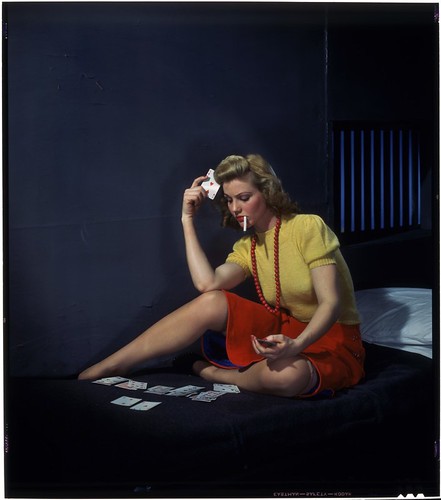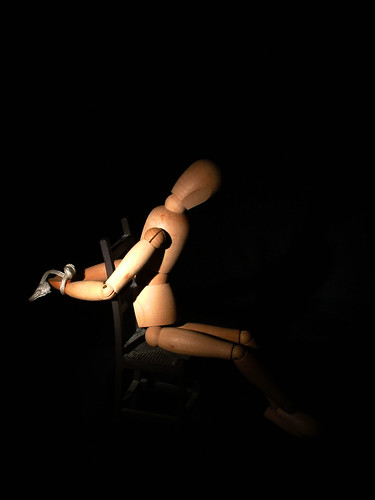 Photo by Mizrak (cc)One of my favorite things about reading and writing romance is the use of both the hero and heroine's POV. There's something about getting to see inside the guy's head that makes the story so much more interesting to me.
Photo by Mizrak (cc)One of my favorite things about reading and writing romance is the use of both the hero and heroine's POV. There's something about getting to see inside the guy's head that makes the story so much more interesting to me.
But writing the male POV (if you're a woman) can be a bit of a challenge (and vice versa for guys writing women). Men and women have different thought patterns and different ways of being in the world, so if we're truly going to get inside the head of the opposite sex, we need to be aware of those differences.
I personally find male characters fun and almost easier to write than my female characters. But that may be because in life, I've always been more comfortable around guys (well, when it comes to being friends, once I was romantically interested in a guy, I turned into an awkward mess). So, I've spent a lot of time with groups of guy friends, have seen how they interact, and of course, I'm married to one, so that helps. :)
But what are the differences? Author Keri Arthur outlined a number of points to be aware of. (article here)
Men...
Are action-oriented. Do instead of think about it.
--They aren't going to agonize over whether or not they should kiss the woman, they do it, then deal with the consequences afterward (unless your character is a teen boy, then the insecurity may cause some agonizing and indecision.)
--Ever watch a man shop? They don't browse and wander. They know the item they want, go to that particular store, purchase it, leave.
They tend to be less patient.
--This goes back to the action thing. Sitting around waiting for something to happen or waiting in line is uncomfortable.
They like to be in charge.
--Whether it's cultural or biologically ingrained, men like being the alpha.
Are more visual.
--This is why Playboy works for men, but Playgirl doesn't interest many women. This is a very important distinction particularly if you're writing romantic interactions or love scenes from the guy's POV.
--I'm reading Lauren Dane's Coming Undone
right now and she had a scene where the hero was looking at the heroine on his bed and thinking about how he felt about her. But then he stops his thoughts, something to the effect of...he would have delved deeper into (whatever the thought was), but Hello, naked. The line made me laugh because it was just how I imagine a guy would think.
--So when writing your guy, make sure he takes in the things he can see about his heroine. Your heroine, on the other hand will be much more about tactile, scents, and emotional cues. (Women need a plot--that's why romance novels are so popular.)
Are problem solvers
--When I vent to my husband, he starts dishing out advice. That's now what I want. I just wanted him to listen. Men don't get the point of that. They see a problem, they want to fix it.
Present a confident front
--They try to avoid asking for advice or permission, admitting to being wrong, or hedging ("I'm not sure", "This will work, right?")
Say what they mean
--They won't share every thought they have, but when they do say something it is typically straightforward.
--They don't use euphemisms or flowery adjectives. Their language (especially if we're in internal thoughts) is going to be more coarse and blunt.
--Don't say things in a passive way. Instead of "Are you hungry?" he'll just say, "I'm hungry."
Think about sex more than women and see if differently
--According to stats, 60% of men say they think about sex at least once a day, whereas 25% of women do
--"Sex is simpler and more straightforward for them. That does not mean that men do not seek intimacy, love, and connection in a relationship, just as women do. They just view the role of sex differently. Women want to talk first, connect first, then have sex. For men, sex is the connection. Sex is the language men use to express their tender loving vulnerable side. It is their language of intimacy." (from WebMD)
See conversations as a means to exchange information
--venting and small talk are not preferred. This is why when guys hang out together, there is usually an activity involved, whereas women can just get together and chat for the sake of chatting.
Emotion, except for anger, is usually kept under wraps or repressed altogether.
--This is why it's so satisfying in a story when the guy finally breaks down and accepts how he's feeling about the heroine.
--Guys rarely cry. If your hero is going to cry, save that moment and use it for maximum impact.
Alright, so I know a lot of these sound stereotypical, and not every guy is going to fall into that. But stereotypes do exist for a reason. Hope this at least gets you started.
So have you written in the POV of the opposite sex? If so, do you find it difficult or fun? Do you enjoy reading books that offer both perspectives?
*This is a re-post from my Fiction Groupie blog 2010.



